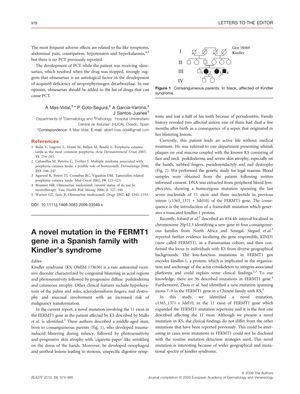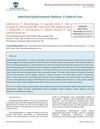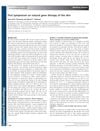A Novel Mutation in the FERMT1 Gene in a Spanish Family with Kindler’s Syndrome
December 2009
in “
Journal of The European Academy of Dermatology and Venereology
”

TLDR Researchers found a new mutation in the FERMT1 gene in a Spanish family with Kindler syndrome.
In the 2009 study, researchers identified a novel mutation in the FERMT1 gene, specifically a homozygous mutation c1365_1371 + 3del10 in exon 11, in a Spanish family affected by Kindler syndrome (KS). KS is a rare autosomal recessive disorder characterized by congenital blistering, photosensitivity, progressive poikiloderma, and cutaneous atrophy, among other symptoms. The patient, born to consanguineous parents, exhibited typical KS symptoms including trauma-induced blistering from infancy, photosensitivity, skin atrophy, and mucosal involvement. The mutation leads to a frameshift resulting in a truncated kindlin-1 protein, which is involved in the organization of the actin cytoskeleton to integrin-associated platforms. This discovery expanded the known mutations in the FERMT1 gene and provided insight into the genetic diversity of KS. Despite the novel mutation, the clinical findings were consistent with previously reported cases of KS.

